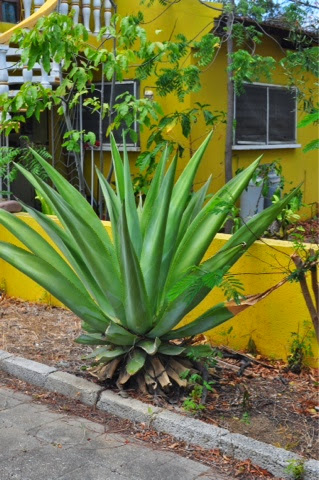More interesting than the palms are what my mother has been calling "beezlebub" trees (a corruption of baobab, to which they are apparently related; actually called Bursera Simaruba or Brazilwood in the real world.) The tourist brochure I picked up says these trees were valued in the 17th century because they contain a pigment used to make red paint, and so the dutch exported them. The brochure also says theyre locally known as "tourist trees" thanks to their red skin which peels off after time in the sun.
I am enchanted by them because something about their form, branching and curves is vaguely anthropomorphic. some of them look like tortured dryads. I am fairly sure that if I shouted "for Narnia" some of them would get up and walk. If I was making a movie of Dante's Inferno I would cast these trees for the wood of suicides.
A majority of the vegetation, (even of the non-cactus variety) sports spikey-pokey bits like it is all preparing for a role stinging children in the hunger games. If Bonairean kidlets run around barefoot, they must have feet of steel.
Also in the spikey category are the several types of cactus, some of which have been domesticated and are used for fencing. It isnt terribly unusual to see houses surrounded by carefully lines up Kadushi cactii. This same type of cactus is used to make an alcohol called "Texi-Bon", and some other alcohols.
There are also Kadushi, Prickly Pear and Agave all over the island, including a vertitable cactus forest on the "mountains".
I had never seen Agave outside of a Margarita before, and it is one weirdass plant. It starts out all mild mannered and short, like some mutant Aloe Vera (which are also found here)...
..and then every so often, it goes all porn-star and grows an enormous.... uh.... thing (bloom? stamen? antenna?) They get so tall that they look like weird, Suessian (ok, maybe Freudian) trees.
Thus far, no one appears to be making tequlia on the island, despite all of the wild agave. There are two distilleries making alcohol from the kadushi though, more on that later.
Lastly, since grass isnt really a thing here, its reduced to a tile-worthy design. For only $3.20 you too can have a lawnlike livingroom.




























































